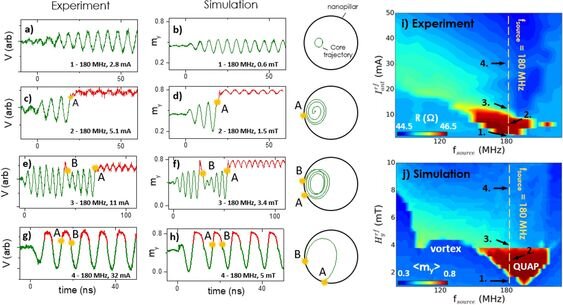Spintronics-based wideband transmission scheme for efficient wireless communications
Are you following us?
We are pleased to announce that a new article by Alex S. Jenkins, Lara San Emeterio Alvarez, Paulo P. Freitas & Ricardo Ferreira was published in Nature magazine in Scientific Reports.
In this recent publication entitled “Digital and analogue modulation and demodulation scheme using vortex-based spin-torque nano-oscillators”, researchers at INL have demonstrated a spintronics-based wideband frequency scheme, where nominally identical nano-devices, called magnetic tunnel junctions, are used as both a wideband frequency source and sensor.
Existing wireless communications paradigms mostly focus on the transmission of data over very narrow frequency bands, due to tight band restrictions which vary country to country, which ultimately limits the amount of data which can be transmitted. Emerging communications systems, such as autonomous sensor networks and on-chip communications have much more flexibility in terms of the potential frequency bandwidth they can use, however, existing conventional electronics is ill-suited to accommodating a truly wideband frequency spectrum.
The wideband nature of the effect reported by the researchers at INL allows information to be transmitted in a much more efficient manner, where M characters are transmitted, rather than conventional systems which focus on binary transmission. The increase in efficiency which is possible with this type of data transfer offers a potentially radical new approach to how we efficiently send and receive information wirelessly.
+ You can read the full article here: https://bit.ly/inl-nano-oscillators

